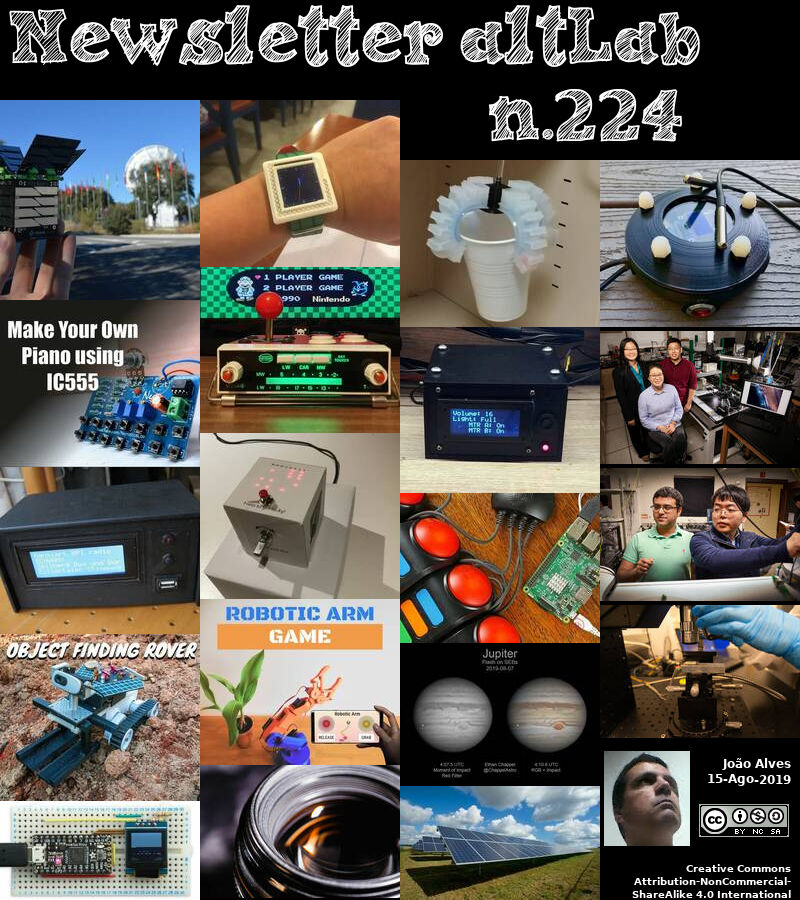2019-08-15 - Nº 224
Editorial
Esta é a Newsletter Nº 224 que se apresenta com o mesmo formato que as anteriores. Se gostar da Newsletter partilhe-a!
Todas as Newsletters encontram-se indexadas no link.
Esta Newsletter tem os seguintes tópicos:
Faz anos hoje que nascia, em 1892, Louis de Broglie. Este Físico francês ficou conhecido pelas suas pesquisas sobre a teoria quântica e pela sua descoberta da natureza ondulatória dos electrões. Em 1923, ele argumentou que desde que a luz possa ser vista em algumas condições como partículas (efeito fotoeléctrico) e outras vezes como ondas (difracção), devemos considerar que a matéria tem a mesma ambiguidade de possuir ambas as propriedades de partículas e ondas. Por isso, ele recebeu o Prémio Nobel de Física de 1929.
Nesta semana que passou ficámos a saber que Júpiter foi atingido por algo tão grande que foi observado da Terra. Um astrónomo amador, Ethan Chappel, capturou algo espectacular com o seu telescópio de quintal na quarta-feira, quando gravou um flash brilhante na superfície de Júpiter. A sequência capturada mostra a mancha branca vista no lado inferior esquerdo do planeta nas imagens acima em 7 de Agosto. Embora ainda tenha que ser confirmado por um segundo observador, parece um grande asteróide colidindo com o planeta gigante de gás. O flash é breve e desaparece rapidamente, aumentando a ideia de que provavelmente foi causado por um impacto.
Na Newsletter desta semana apresentamos diversos projetos de maker.
 João Alves ([email protected])
João Alves ([email protected])
O conteúdo da Newsletter encontra-se sob a licença  Creative Commons Attribution-NonCommercial-ShareAlike 4.0 International License.
Creative Commons Attribution-NonCommercial-ShareAlike 4.0 International License.
Novidades da Semana

Jupiter just got slammed by something so big we saw it from Earth
"An amateur astronomer caught something spectacular with a backyard telescope Wednesday when he recorded a bright flash on the surface of Jupiter. The biggest planet in the solar system routinely delivers stunning pictures, like those snapped by NASA's Juno spacecraft, but the unexpected flash has astronomers excited at the possibility of a meteor impact. Ethan Chappel pointed his telescope at the gas giant planet at just the right time, capturing the white spot seen on the lower left side of the planet in the above images on Aug. 7. While it has yet to be confirmed by a second observer, it looks like a large asteroid crashing into the gas giant planet. The flash is brief and quickly fades away, boosting the idea that it was likely caused by an impact. "Another impact on Jupiter today!"" [...]
Outras Notícias
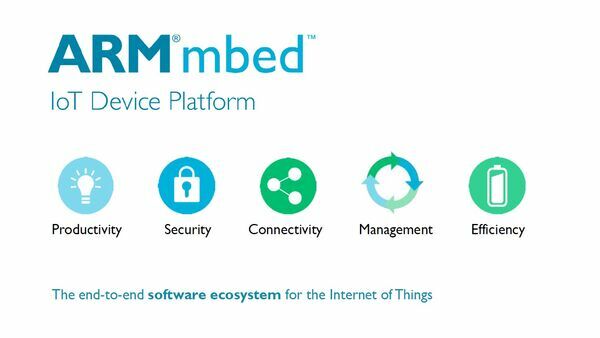
Mbed OS 5.13.3 released
"We are pleased to announce the Mbed OS 5.13.3 release is now available. This is the latest patch release based on the feature set that Mbed OS 5.13 introduces. Summary In this release we have added the following targets: CY8CKIT_062S2_43012 We have fixed the following reported issues: 10912 How to reset Cellular network interface? 9850 GREENTEA can't compile if DEVICE_SERIAL is not enabled We have also: Added an USB device implementation for PSOC6 Added the missing serial_free() implementation for FUTURE_SEQUANA Fixed rom start & size for CY8CKIT_062_WIFI_BT & CY8CPROTO_062_4343W Added crash capture support to STM32F413 targets There are also a number of other fixes and code improvements. For full details of this and previous releases, please visit our releases page. " [...]

A Monster Black Hole has been Found with 40 Billion Times the Mass of the Sun
"If contemplating the vast size of astronomical objects makes you feel rather puny and insignificant, then this new discovery will make you feel positively infinitesimal. It’s almost impossible to imagine an object this large: a super massive black hole that’s 40 billion times more massive than our Sun. But there it is, sitting in the center of a super-giant elliptical galaxy called Holmberg 15A. Holmberg 15A is about 700 million light years away, in the center of the Abell 85 galaxy cluster. This behemoth has been in astronomers’ cross-hairs before. Previously, its mass was estimated at 310 billion times the mass of the Sun, an almost inconceivable size." [...]
Ciência e Tecnologia

Nanowire arrays could improve solar cells
"Transparent electrodes are a critical component of solar cells and electronic displays. To collect electricity in a solar cell or inject electricity for a display, you need a conductive contact, like a metal, but you also need to be able to let light in (for solar cells) or out (for displays). Metal is opaque, so the current techniques use metal oxides, most often indium tin oxide — a near-critical rare earth metal — as the conductive contact. Because supplies of this rare earth metal are limited, Lawrence Livermore National Laboratory (LLNL) researchers have turned to ordered metal nanowire meshes that provide high transmissivity (due to the small diameters of the nanowires), high electrical connectivity (due to the many contact points in the mesh) and use more common elements. The research appears in the journal Soft Matter. The nanowire arrays also have applications for optical metamaterials — composite materials usually made of metals and dielectrics — that have unique optical properties not found in nature." [...]
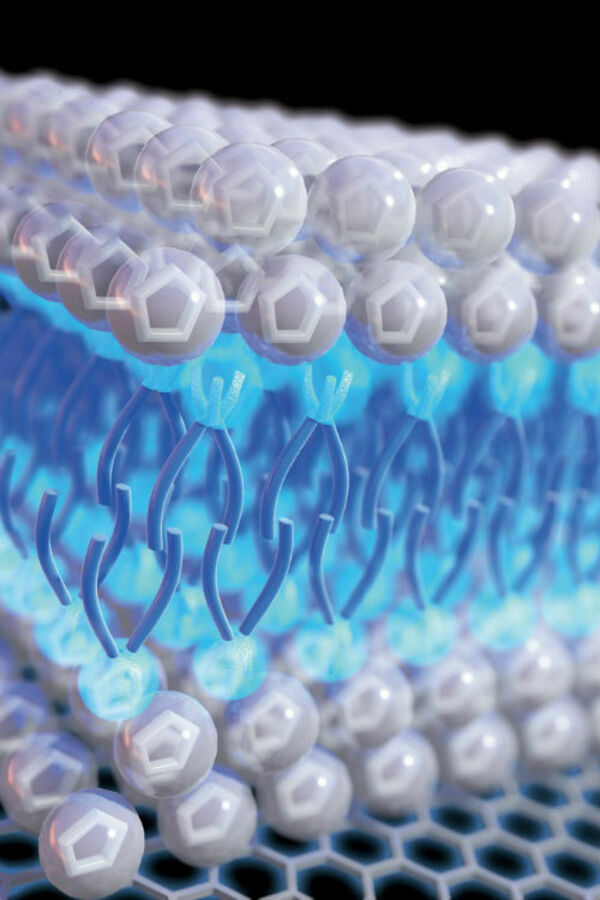
Supercapacitors turbocharged by laxatives
"An international team of scientists, including a professor of chemistry from the University of Bristol, has worked out a way to improve energy storage devices called supercapacitors, by designing a new class of detergents chemically related to laxatives. Their paper, published today in the journal Nature Materials, explains why these detergents, called ionic liquids, are better electrolytes than current materials and can improve supercapacitors. Currently, aqueous and organic electrolytes are used, but more recently, researchers and manufacturers have been testing ionic liquids instead to boost performance. Although ionic liquids are salts, at room temperature they are surprisingly not crystalline solids - as their name suggests they are in fact liquids. This gives ionic liquids numerous advantages over conventional electrolytes because they are stable, non-flammable, and often much more environmentally friendly. To explore the exciting potential offered by ionic liquids for emerging electrochemical technologies the authors designed a new set of highly efficient detergent-like ionic liquid electrolytes and explained how they work at electrode surfaces." [...]
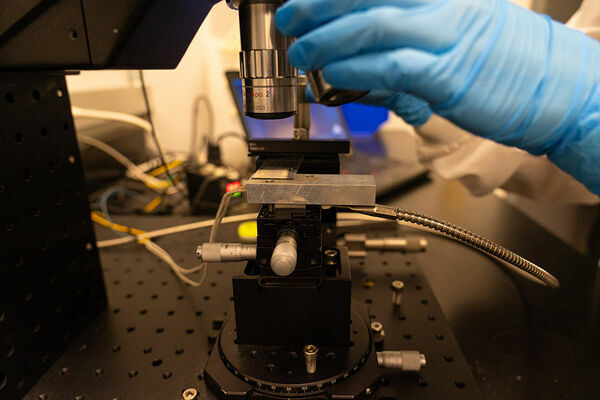
Thinnest optical waveguide channels light within just three layers of atoms
"Engineers at the University of California San Diego have developed the thinnest optical device in the world—a waveguide that is three layers of atoms thin. The work is a proof of concept for scaling down optical devices to sizes that are orders of magnitude smaller than today’s devices. It could lead to the development of higher density, higher capacity photonic chips. Researchers published their findings Aug. 12 in Nature Nanotechnology. “Fundamentally, we demonstrate the ultimate limit for how thin an optical waveguide can be built,” said senior author Ertugrul Cubukcu, a professor of nanoengineering and electrical engineering at UC San Diego. The new waveguide measures about six angstroms thin—that is more than 10,000 times thinner than a typical optical fiber and about 500 times thinner than on-chip optical waveguides in integrated photonic circuits." [...]
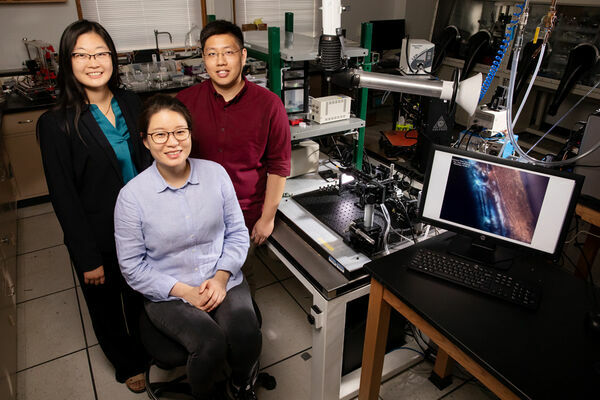
Printing flattens polymers, improving electrical and optical properties
"Researchers have found a way to use polymer printing to stretch and flatten twisted molecules so that they conduct electricity better. A team led by chemical and biomolecular engineers from the University of Illinois report their findings in the journal Science Advances. Conjugated polymers are formed by the union of electron-rich molecules along a backbone of alternating single and double chemical bonds. The conjunction allows electricity to travel very quickly through a polymer, making it highly desirable for use in electrical and optical applications. This mode of transporting charges works so well that conjugated polymers are now poised to compete with silicon materials, the researchers said. However, these polymers tend to contort into twisted spirals when they join, severely impeding charge transport." [...]
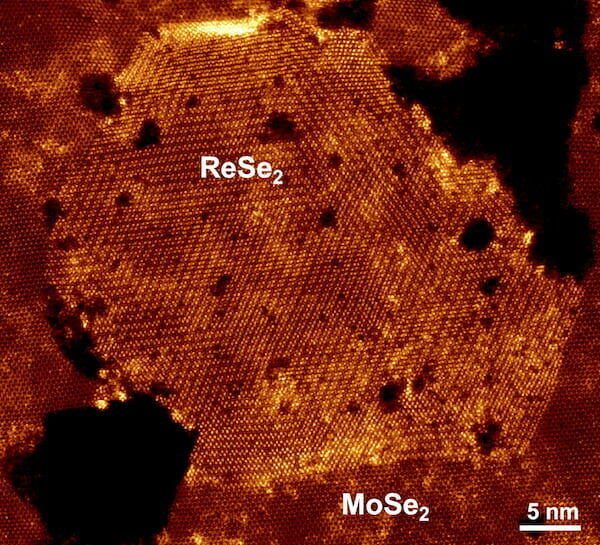
Sharp meets flat in tunable 2D material
"A Rice University lab wants its products to look sharp, even at the nanoscale. Its latest creation is right on target. The Rice lab of materials scientist Pulickel Ajayan has created unique two-dimensional flakes with two distinct personalities: molybdenum diselenide on one side of a sharp divide with rhenium diselenide on the other. From all appearances, the two-toned material likes it that way, growing naturally — though under tight conditions — in a chemical vapor deposition furnace. The material is a 2D transition metal dichalcogenide heterostructure, a crystal with more than one chemical component. That’s not unusual in itself, but the sharp zigzag boundary between elements in the material reported in the American Chemical Society journal Nano Letters is unique." [...]

Photovoltaic technology to power synaptic- and neuronal-like devices
"Recent advances of research on the application of photovoltaic technologies for self-powering of neuromorphic devices are reported in a detailed review by Dr Amador Pérez-Tomás, of the ICN2 Oxide Nanophysics group, which has been just published in Advanced Materials Interfaces and portrayed on its cover. Neuromorphic engineering, which aims at developing devices that mimic the brain structures functioning, is nowadays an emerging field of research that has the potentiality to produce a change of paradigm in computing, signal processing and artificial neuroscience. Since energy efficiency and autonomy are critical aspects of the development of these systems, the implementation of self-powering through sun light is being explored. A review of the latest progresses in photo-neuromorphic electronics by Dr Amador Pérez-Tomás of the ICN2 Oxide Nanophysics Group has been published in Advanced Materials Interfaces and portrayed on its cover. This report focuses on the application of a specific category of materials, functional oxide thin-films, for photovoltaic neuromorphic systems production. The development of more powerful computers and artificial intelligence systems, indeed, is facing an important limitation given by their energy consumption." [...]
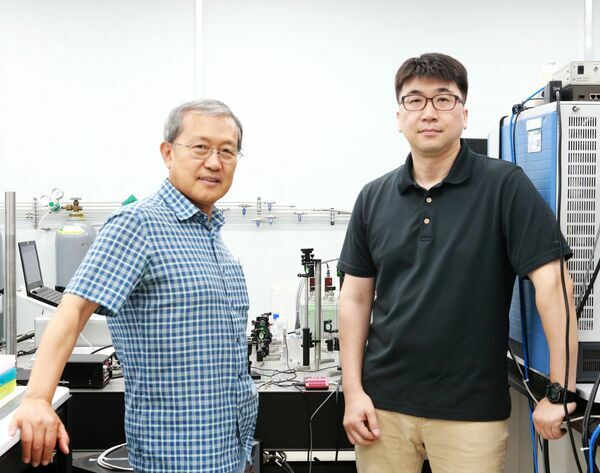
Development of Simplified New Mass Spectrometric Technique using Laser and Graphene
"A technology that can obtain high-resolution, micrometer-sized images for mass spectrometric analysis without sample preparation has been developed. DGIST Research Fellow Jae Young Kim and Chair-professor Dae Won Moon’s team succeeded in developing the precise analysis and micrometer-sized imaging of bio samples using a small and inexpensive laser. DGIST announced that Research Fellow Jae Young Kim in the Department of Robotics Engineering and Chair-professor Dae Won Moon’s team developed a technology that can analyze experiment samples without any preparation processing. Due to its ability to obtain high-resolution mass spectrometric images without an experimental environment using ‘continuous wave laser’1, the technology is expected to be applied widely in the precise medicine and medical diagnosis fields. Many advance preparations are needed for the mass spectrometric imaging of biometric samples using ‘specimen,’ which thinly cut an object to analyze. The specimen must be changed artificially since they cannot be analyzed accurately in a room temperature or atmospheric pressure." [...]
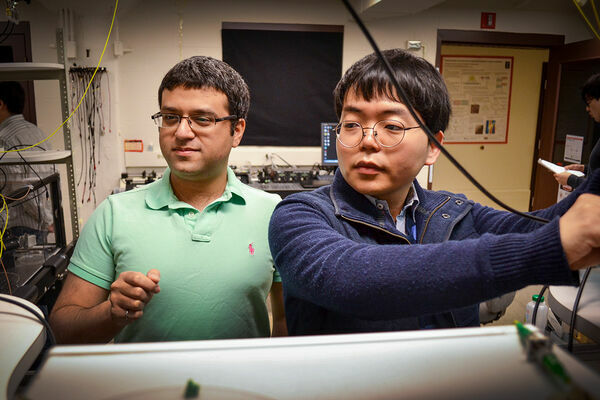
Researchers turn off backscattering, aim to improve optical data transmission
"Engineers at the University of Illinois have found a way to redirect misfit light waves to reduce energy loss during optical data transmission. In a study, researchers exploited an interaction between light and sound waves to suppress the scattering of light from material defects – which could lead to improved fiber optic communication. Their findings are published in the journal Optica. Light waves scatter when they encounter obstacles, be it a crack in a window or a tiny flaw in a fiber optic cable. Much of that light scatters out of the system, but some of it scatters back toward the source in a phenomenon called backscattering, the researchers said. “There is no such thing as a perfect material,” said mechanical science and engineering professor Gaurav Bahl, who led the study." [...]

Towards a light driven molecular assembler
"Chemists at Kiel University built the first artificial molecular machines that perform synthesis Chemists usually synthesize molecules using stochastic bond-forming collisions of the reactant molecules in solution. Nature follows a different strategy in biochemical synthesis. The majority of biochemical reactions are driven by machine-type protein complexes that bind and position the reactive molecules for selective transformations. Artificial “molecular assemblers” performing “mechanosynthesis” have been proposed as a new paradigm in chemistry and nanofabrication. A team of chemists at Kiel University (Germany) built the first artificial assembler, that performs synthesis and uses light as the energy source. The system combines selective binding of the reactants, accurate positioning, and active release of the product." [...]

Schrödinger's Cat with 20 Qubits
"Dead or alive, left-spinning or right-spinning - in the quantum world particles such as the famous analogy of Schrödinger's cat can be all these things at the same time. An international team, including researchers from several leading American universities, together with experts from Forschungszentrum Jülich, have now succeeded in transforming 20 entangled quantum bits into such a state of superposition. The generation of such atomic Schrödinger cat states is regarded as an important step in the development of quantum computers which could outperform classical computers in solving certain tasks. The results were published in Science last Friday. In 1935, the physicist Erwin Schrödinger put forward the thought experiment with the quantum cat, in which the cat is enclosed in a box together with a radioactive sample, a detector and a lethal amount of poison. If the radioactive material decays, the detector triggers an alarm and the poison is released." [...]
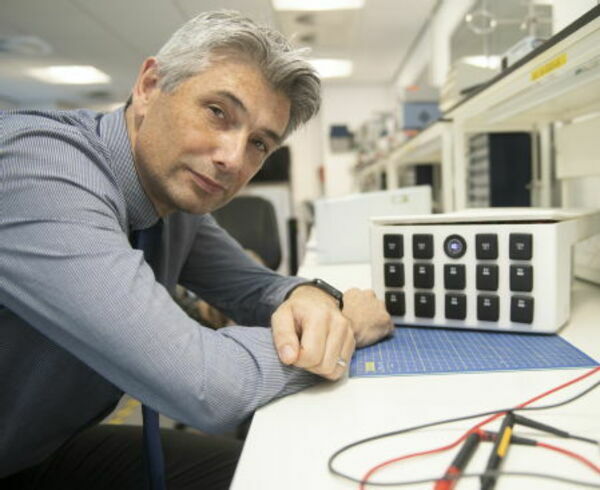
Researchers convert used car batteries into units that could power farms in the developing world
"As part of a Circular Economy for electric vehicle battery systems, as the number of such vehicles increases rapidly, Professor James Marco in the labthe need to find the best way to reuse and recycle vehicle batteries becomes just as intense. Now researchers at WMG, University of Warwick, have found a way not just to recycle those used batteries, but repurpose them as small energy storage systems (ESS) for off grid locations in developing countries or isolated communities. The repurposed units, each containing approximately 2kWh of energy capacity, will be able to power a small shop, a farm holding, or multiple residential homes. WMG’s Professor James Marco who was lead researcher on the project said: “When an electric vehicle’s battery reaches the end of its useful life it is by no means massively depleted. It has simply reached the end of its useful life in a vehicle. It is generally accepted that an EV battery has reached end of life when its capacity drops to 80% of a fresh battery." [...]
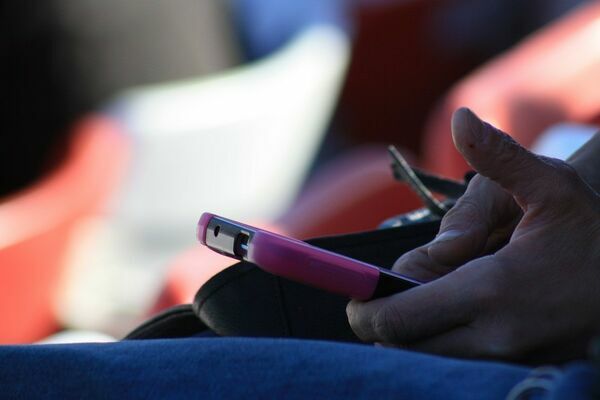
Brains trained on e-devices may struggle to understand scientific info
"Overuse of electronic devices is no “LOL” — laughing out loud — matter, according to researchers, who suggest that excessive interaction with e-devices may be related to weaker activity in areas of the brain that are key to understanding scientific texts. In a study that used neuroimaging to explore brain activity, the researchers found the frequent e-device use — such as texting on a smart phone or reading on a tablet — was negatively correlated with activity in brain areas that are critical for integrating multiple sources of information, the researchers said. Expository texts, such as articles in a science textbook, typically use inter-connected information, which means that material in one part of the text must be linked to information found in another part of the text, especially when reading for the purpose of understanding inter-connected concepts. “In this case, if people use electronic devices excessively on a daily basis, that could possibly impair their ability to acquire hierarchical order — or structure — of scientific concepts,” said Ping Li, associate director emeritus of Penn State’s Institute for CyberScience and professor of psychology, linguistics, and information sciences and technology. Li added that readers often must integrate many pieces of information that are arranged in a hierarchy in the article. Just like a person exercises to strengthen certain muscles, the researchers suggest that by using certain areas of the brain — and ignoring others — those sections may become stronger, or weaker." [...]
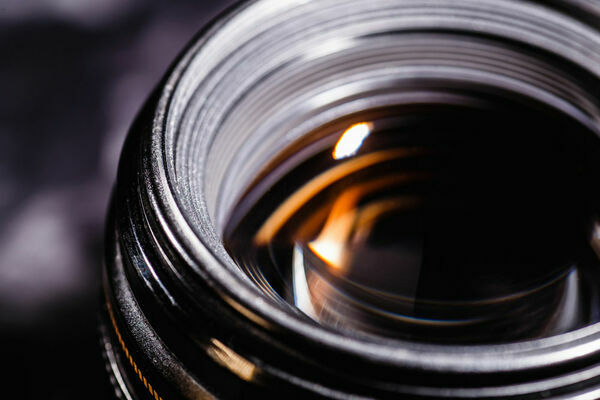
Eureka! Mexican solves physical problem with centuries without solution
"“I remember that one morning I was preparing bread with Nutella, and suddenly I said: mothers! is there! ". Narrates the Mexican Rafael González the right time when he discovered the solution to a problem optical physicist with centuries unresolved. Isaac Newton himself could not solve it at the time and although approximations had already been found, no one had found the complete answer. This is the solution to spherical aberration in optical lenses , with which now many industries (telescopes, cameras, etc.)" [...]
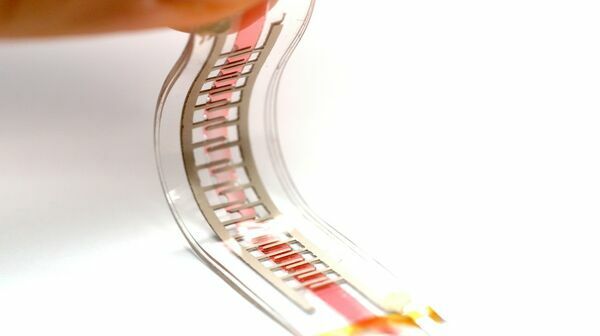
A miniature stretchable pump for the next generation of soft robots
"Scientists at EPFL have developed a tiny pump that could play a big role in the development of autonomous soft robots, lightweight exoskeletons and smart clothing. Flexible, silent and weighing only one gram, it is poised to replace the rigid, noisy and bulky pumps currently used. The scientists’ work has just been published in Nature. Soft robots have a distinct advantage over their rigid forebears: they can adapt to complex environments, handle fragile objects and interact safely with humans. Made from silicone, rubber or other stretchable polymers, they are ideal for use in rehabilitation exoskeletons and robotic clothing. Soft bio-inspired robots could one day be deployed to explore remote or dangerous environments." [...]

Virtual 'Universe Machine' Sheds Light on Galaxy Evolution
"By creating millions of virtual universes and comparing them to observations of actual galaxies, a UA-led research team has made discoveries that present a powerful new approach for studying galaxy formation. How do galaxies such as our Milky Way come into existence? How do they grow and change over time? The science behind galaxy formation has remained a puzzle for decades, but a University of Arizona-led team of scientists is one step closer to finding answers thanks to supercomputer simulations. Observing real galaxies in space can only provide snapshots in time, so researchers who want to study how galaxies evolve over billions of years have to revert to computer simulations. Traditionally, astronomers have used this approach to invent and test new theories of galaxy formation, one-by-one." [...]
Projetos Maker
Diversos Projetos interessantes.
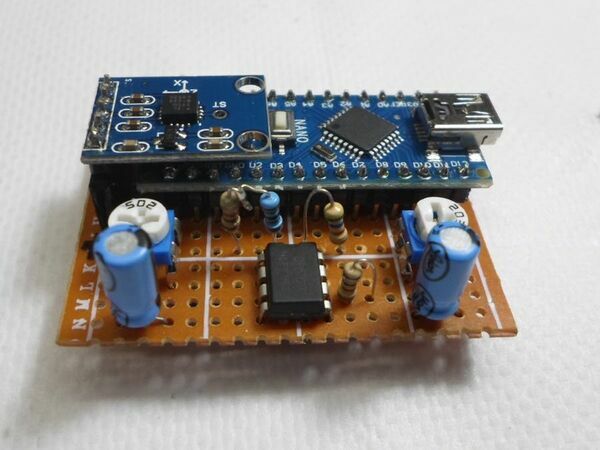
DIY Sensitive ADXL335 Earthquake Detector
"An interesting way to increase sensitivity and reduce the noise of the ADXL335 analog accelerometer. The ADXL335 is a low power, complete 3-axis accelerometer with analog voltage outputs. The product measures acceleration with a minimum full-scale range of ±3 g.It can measure the static acceleration of gravity in tilt-sensing applications, as well as dynamic acceleration resulting from motion, shock, or vibration. Sensitivity is 330 mV/G. Besides many "earthquake detector" projects on the Internet that use this accelerometer, its sensitivity for this purpose is very low so these devices are practically non-functional. I am confident in this because I have made and tested many of them." [...]
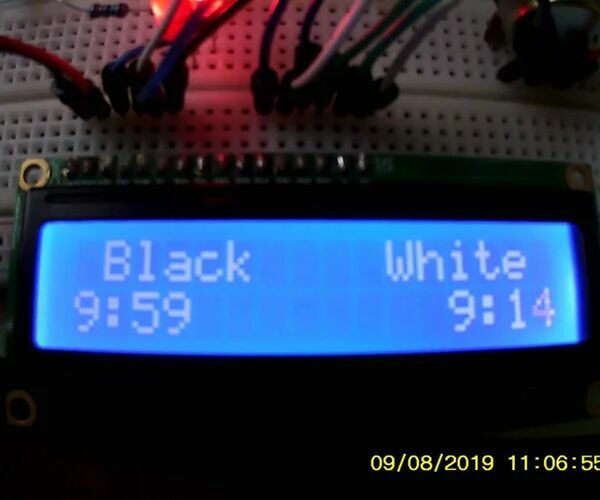
How to Make a Chess Clock With Arduino
"You play chess?Probably.If you are seen this instructable and you never play a game of chess I think it some strange .OK , you can never played a game of chess and you are trying to learn ,in first place ,in this time I don't gonna teach you how to play ,but the true answer is how to make a chess clock ,if you seen on TV or played on a championship of chess you see that every table have a clock a little double display clock. There are many brands that fabricate this clocks the international clock authorized by FIDE is DGT this clock are many models ,practically every two ears goes out a new model but this clocks are very expensive a clock non authorized by FIDE can cost you about 100 euros in portugal ( like Excalibur ,a model of a clock non authorized but very good quality) can cost 150 euros . OK let's make a chess clock ! :-D Supplies: Arduino board (can be anyone). Breadboard. Jumper wires." [...]
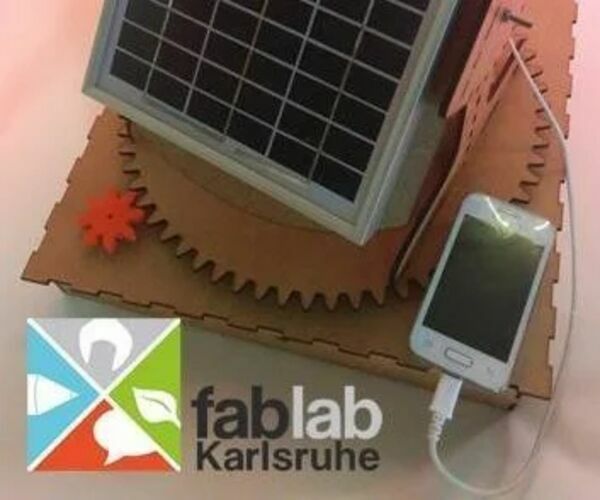
Heliostat
"Wouldn’t it be cool to charge your cell phone with the power of the sun instead of simply plugging it into a socket? In this workshop we will built a Heliostat, which is a device that reflects and follows the sun's rays continuously in a fixed direction, in the manner of a sunflower for example. Our heliostat is able to store solar energy which then can be used e.g. to charge a cell phone. Properties of this workshop: Timeplanning: Total: 5h 1. Introduction on solar energy: 15 minutes 2." [...]
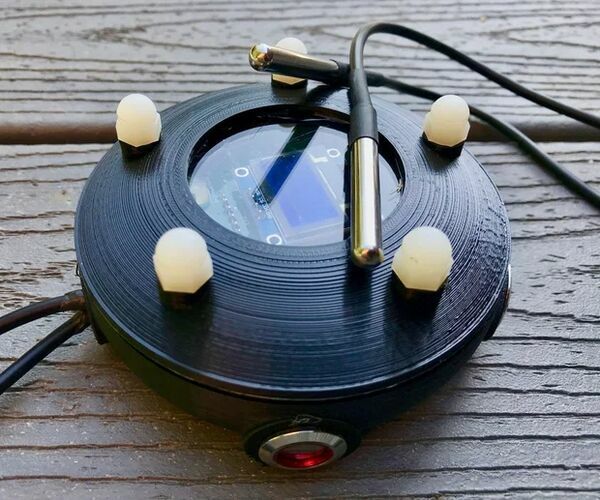
Alaska Datalogger
"Alaska is on the edge of advancing climate change. Its unique position of having a fairly untouched landscape populated with a variety of coal mine canaries enables a lot of research possibilities. Our friend Monty is an Archaeologist who helps with camps for kids in Native Villages scattered around the state--Culturalalaska.com. He has been building cache sites for the historical preservation of food with these kids and wanted a way of temperature monitoring that he could leave for about 8 months of winter. A food cache in Alaska is designed to prevent Bear entry and can either be buried or secured in a small cabin-like structure on poles. Unfortunately the warming of the climate makes many of these handy refrigerator designs more like a microwave this summer--honestly its really hot up here!" [...]
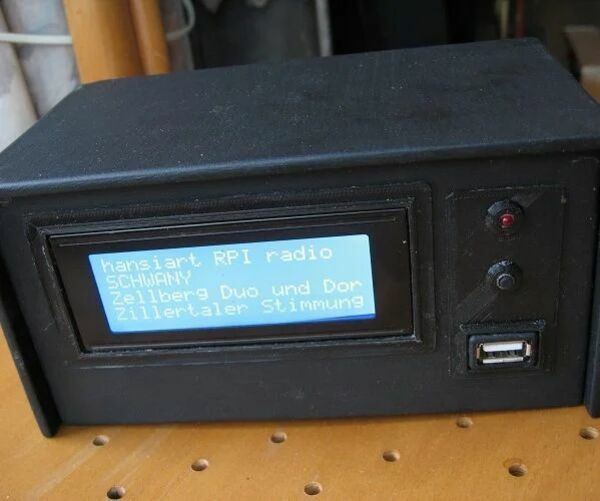
Raspberry Zero Internet Radio
"This is not the first raspberry internet radio, i know. But this one can be build by almost anyone. No programming skills or soldering skills needed. Just buy the components, connect some wires between them and thats it!. Oh, and burn an image of the radio operating system on an sd card. It would be a nice birthday present as it is very easy to operate." [...]
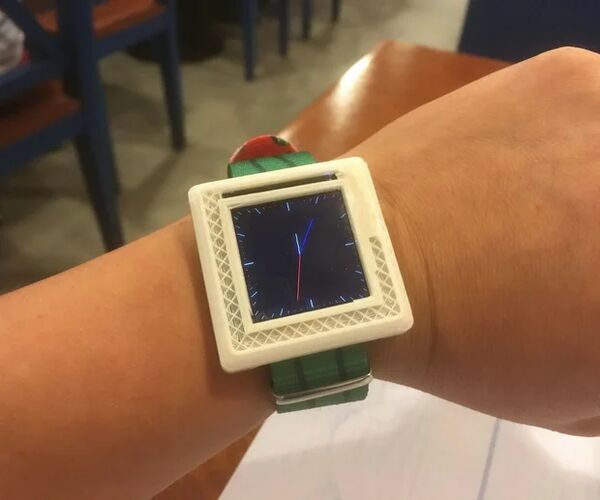
Arduino Watch
"This Instructables show how to make a Arduino Watch from Arduino Watch Core. " [...]
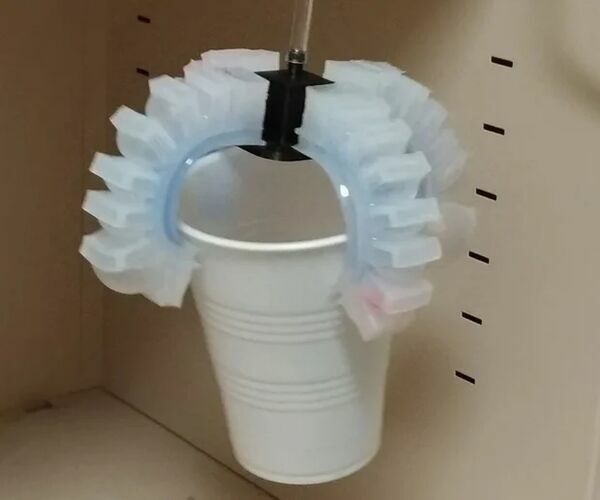
Soft Robotic Gripper
"The field of soft robotics (robots made from intrinsically soft materials such as silicons and rubbers) has been growing rapidly in recent years. Soft robots can be advantageous in comparison to their hard counterparts because they are flexible, adaptable to new environments, and they foster safer human-robot interaction. Soft robotic grippers, in particular, can be useful for handling delicate objects without causing damage. This Instructable serves as a detailed guide on how to construct soft robotic "fingers" that can be easily operated with a simple hand pump. The STL files for the 3 piece mold can be found at the bottom of the page, in addition to the STL file for a central hub which will allow you to create a fully functioning 4-fingered soft robotic gripper. This project is ideal for soft robot enthusiasts and classrooms alike, with relatively few supplies needed and fast fabrication times." [...]
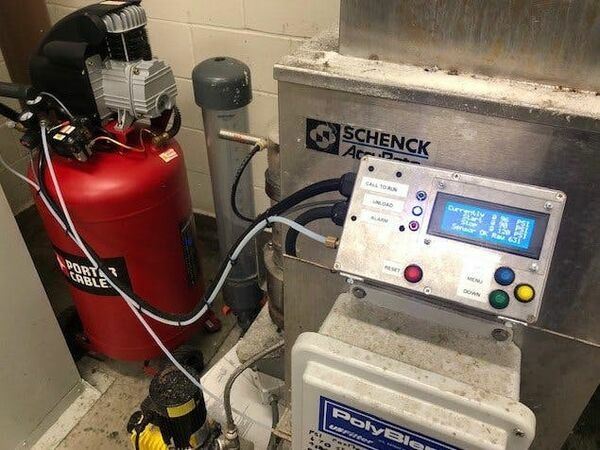
Air Compressor Controller
"Replace an unreliable cheap pressure switch with an Arduino-controlled high current relay. This whole project started when one of my air compressor at work started eating pressure switches and burning out the compressor unit, I replaced the first one with a cheap ($17) off-the-shelf switch and it lasted about a month. The next switch I installed was a higher end model ($215) and it lasted about 2 months. After the third switches, I decided to make my own switch using an Arduino controller and a high current rated relay. The factory switches ranged in price anywhere from $17 to $215, I built this unit for $187 total (not including time). This air compressor has a high cycle rate, that is why it was destroying so many switches." [...]
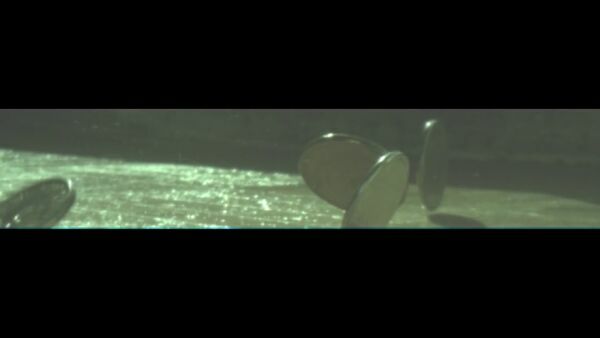
A Guide to Recording 660FPS Video On A $6 Raspberry Pi Camera
" This article will discuss the setup steps that are required for recording videos at high frame rates on cheap Raspberry Pi cameras. Frame rates up to 660FPS on the V1 camera and up to 1007 on the V2 camera can be achieved. Filming at these extremely high frame rates on a Raspberry Pi is much more challenging and involves more work than typical point and shoot photography. " [...]
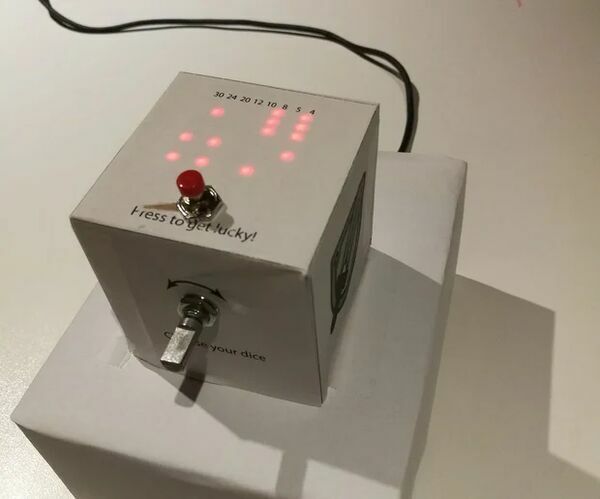
E-dice - Arduino Die/dice 1 to 6 Dice + D4, D5, D8, D10, D12, D20, D24 and D30
"This is a simple arduino project to make a electronic die. It is possible to choose for 1 to 6 dice or 1 out of 8 special dice. Choice is made by simply turning a rotary encoder. These are the features: 1 die: showing big dots 2-6 dice: showing dots as well as total value (alternating) 4, 5, 8, 10, 12, 20, 24 and 30 faced dice showing value and indicator for chosen die animation for rolling dice when pressing the button It is possible to fit everything in a 7cm by 7cm cube including a battery. But then you would have to solder everything. I used a breadboard and some jumper wires to connect everything, hence the bigger box underneath." [...]
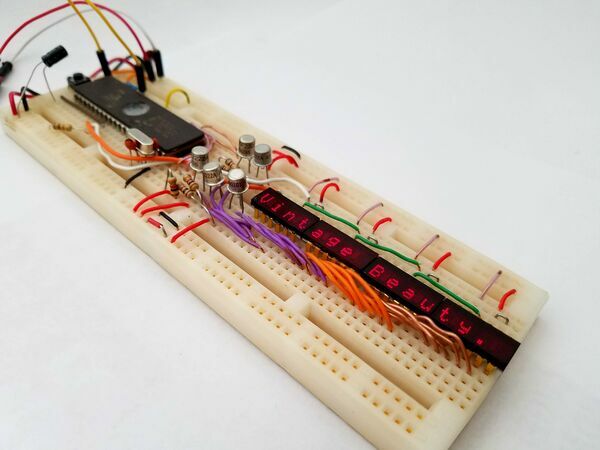
Vintage Beauty
"Driving vintage HP HDSP-2000 Alphanumeric LED displays with a retro EPROM 8051 Microcontroller. I made this project because I love Vintage Hardware and wanted to make something cool with the LED displays and an old 8051 that I had. End goal is to implement Character LCD emulation on the GPIO so it can act as a drop in HD44780/HD66702 based Character LCD replacement. I also wanted to take on the challenge of optimizing the code to run fast enough with the limited speed and peripherals of the 8051 Microcontroller. As a result, I got to learn the 8051's memory map with more detail in order take advantage of the bit-addressable RAM on the chip for a fast bit-banged SPI output, which was pretty fun. Features: Can display the US ASCII character set, as well as Japanese Katakana and Hiragana using a custom 5x7 pixel font stored in the program ROM." [...]
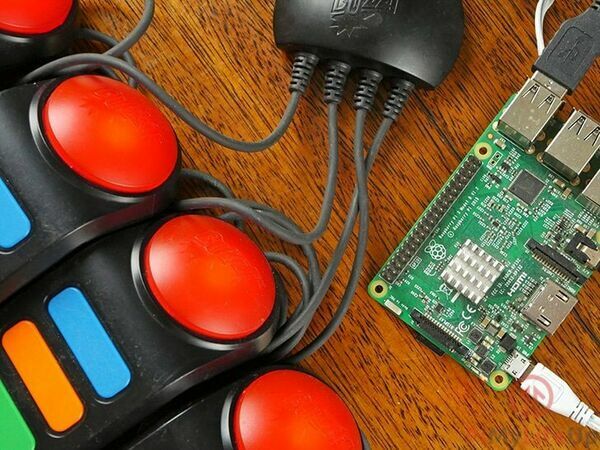
Raspberry Pi Quiz Game using the Buzz Controllers
"In this Raspberry Pi quiz game project, we will be showing you how you can utilize a PlayStation Buzz controller with your Raspberry Pi to run a simple quiz. Throughout this tutorial, we will walk you through the process of interacting with the Buzz controllers by utilizing the hidapi library for Python. The hidapi library will allow us to communicate directly with the Buzz controllers, including retrieving data back from them and writing data to them to switch on and off their red LEDs. By the end of this tutorial, you will of learned how to read information about all your USB devices. Learned how to read data that the devices are sending back and also how to write a library that will act as a simple wrapper to dealing with the device. All of this will conclude in writing a simple quiz game that will make use of all the functionality that we programmed into our Buzz Controller library." [...]
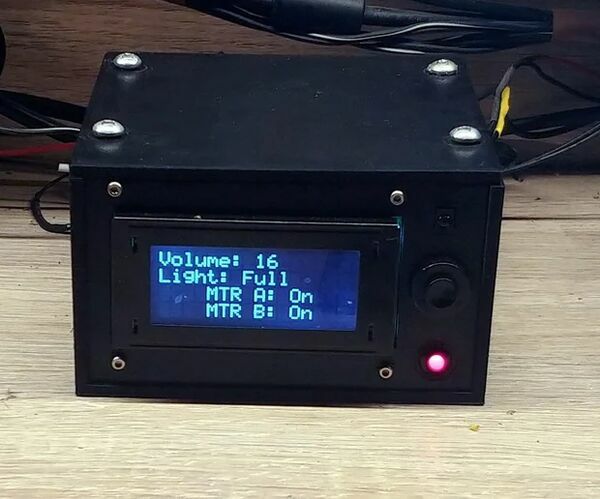
Remote Controlled Computer Desk
"Recently I've encountered an issue, that my laziness became tremendous problem for me at home. As soon as I go to bed, I like to put some nice LED powered light with some series playing on my PC. But... If I want to turn these things off I have to GET UP every time and turn them off by hand. Thus, I've decided to build a complete controller for the entire PC desktop, where I can turn monitors and light on and off, adjust speakers volume and LED strip lighting brightness by pressing a corresponding button on my remote. The project is a PC desk / workbench controller box, that is operated by a IR remote." [...]
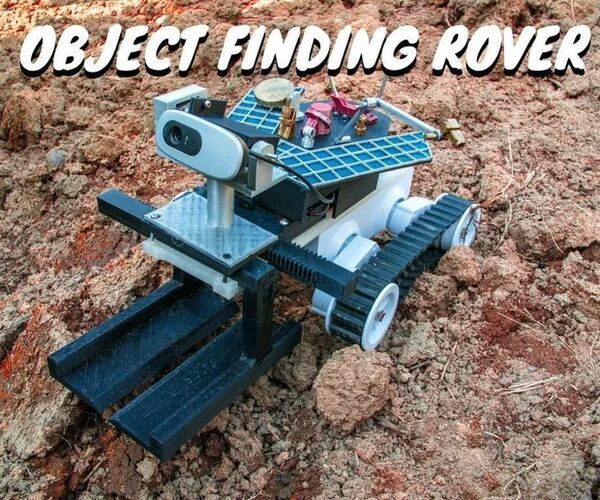
Personal Assistant Robot (Finds Objects and Follows You) Ft. Raspberry Pi + RoboClaw
"This robot has been a dream robot for me to build for a long time. Before diving into how to build this robot, let me give a quick overview of what this robot is capable of! You can ask the robot to follow you around. (Done via the TensorFlow face detection computer vision algorithm) You can ask the robot to find you and then follow you. (Again this will use computer vision + ML) You can ask the robot to find any object (from this list) for you, pick it up using its robotic sled and bring it to where you are. You can give the robot a voice command to carry the collected item and follow you around like an assistant robot." [...]
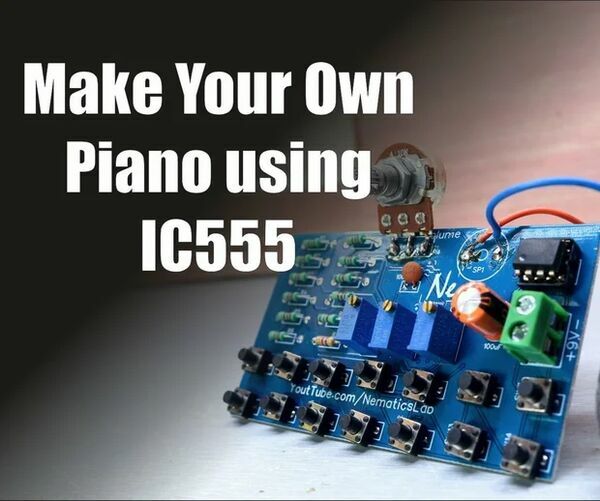
Make Your Own DIY Piano Using IC555!
"In this tutorial, I'll show you how you can make DIY Piano by connecting IC555 timer in ASTABLE multivibrator Mode with variable frequency to a speaker. The piano is a wonderful musical instrument and one can make a cheap one using IC555 timer. This concept of the piano is achieved by making the timer generate 5-15 different kind of sounds. The different sounds are generated through timer by allowing it to run as a free-running mode or astable mode or square wave mode, with variable frequency output option. So without any further ado Lets built it! " [...]
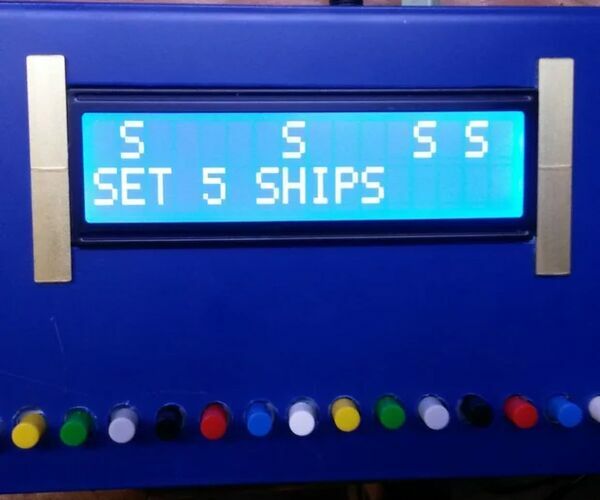
Arduino Battleship Game
"I remember playing a paper and pencil version of the Battleship Game as a kid. In fact, it has been around since about World War 1. I also had an electronic variant in the early 1960s called Sonar Sub Hunt that had lights and sounds and hidden mines. By todays video game standards Battleship is pretty boring but I thought I would make one anyway just to see what the grandkids thought about it. After all, sometimes retro can be cool. There are bits and pieces of this project that would be useful elsewhere even if you arent interested in making the Battleship game." [...]

Interfacing 16×2 LCD in Raspberry Pi Using Python & Tk Tools
"In this project, I go through the steps on how to set up a Raspberry Pi LCD 16X2 to display messages from the Pi Tkinter GUI. " [...]
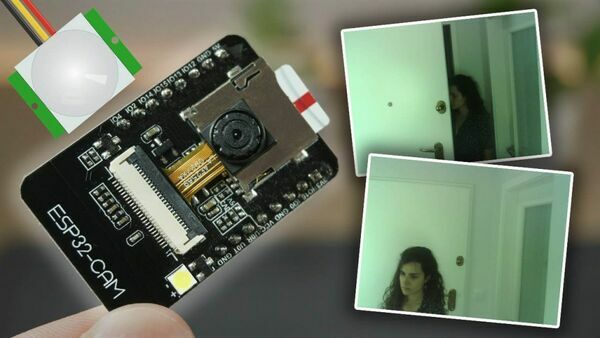
ESP32-CAM PIR Motion Detector with Photo Capture
"In this project, we’re going to make a motion sensor detector with photo capture using an ESP32-CAM. When your PIR sensor detects motion, it wakes up, takes a photo and saves it in the microSD card. This project is very similar with a previous one, but after so many requests, we added a PIR motion sensor to the circuit. So, when motion is detected a picture is taken and saved on the microSD card. For this project, you’ll need the following parts: ESP32-CAM with OV2640 MicroSD card PIR motion sensor 2N3904 transistor FTDI programmer Female-to-female jumper wires 5V power supply for ESP32-CAM or power bank (optional)" [...]
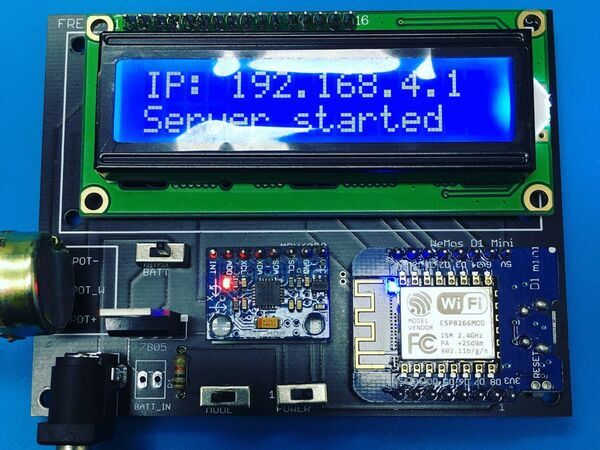
Boo Nought (Raffle Device)
"A motion-activated raffle device that can draw numbers or names. Users can specify the range of numbers or the list of names through WiFi. n class, I use to raffle the names of students and the "lucky ones" get to answer an assignment or quiz on the board. I usually just ask them to write their names on a small piece of paper or use a software on my computer. One day it dawned on me: what if I create a device that raffle the names by shaking it? The device is powered by a WeMos D1 Mini and an MPU6050 IMU." [...]

Guide to Modular Firmware
"This is for embedded software developers with a solid working knowledge of C or C++, but who struggle with large and complex projects. This article is for embedded software developers with a solid working knowledge of C or C++, but who struggle with large and complex projects. If you learn to develop embedded code, e.g. using the Arduino IDE, you find plenty of small example programs. It is helpful to get things started quickly, but as soon as your project begins to grow, help related to software design is rare. In contrast, when you learn software development for desktop applications, project structures and software design is an integral part of the learning process." [...]
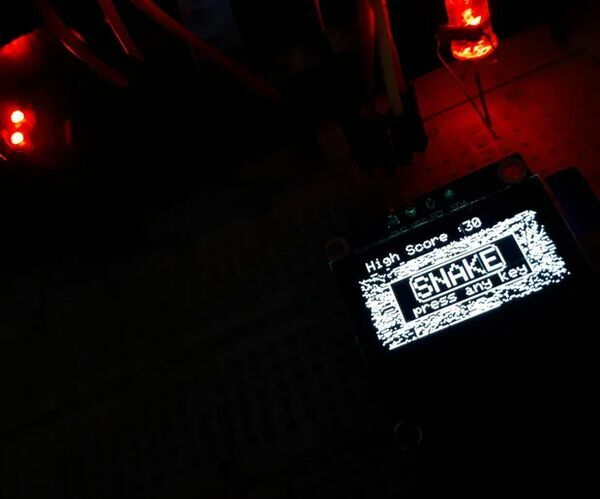
Arduino OLED Snake Game
"Hi and welcome, to our instructables on how to make and arduino OLED Game, this project came about as we were attempting to make our first ever game with an arduino, soooo, we thought where better to start than the nokia classic Snake (well at least a snake clone:) ). What you Will Need Supplies:Arduino UNO or clone OLED Display 4 Diodes 500-1k resistor 4 controller buttons Passive Piezo buzzer optional Solderless BreadBoard Please note these links are for example only" [...]
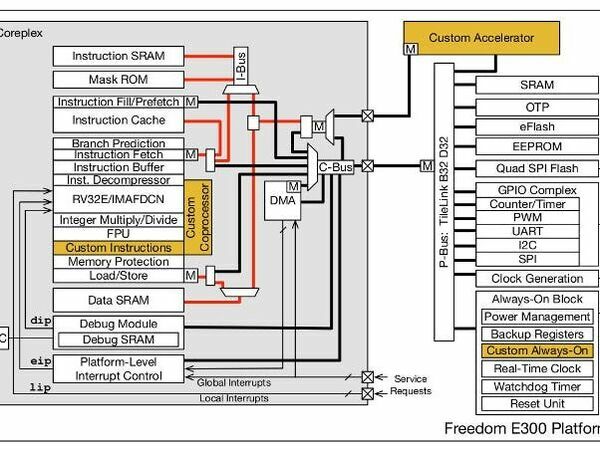
Building RISC-V for the Arty 100T
"In this tutorial, we are going to look at how we can build a RISC-V, specifically the SiFive Freedom E310. The Arty 100T is the largest device available for the ARTY A7, this makes it ideal for deployment of soft core processors. These processors can be either proprietary or opensource, one of the hottest open source processors now is the RISC-V." [...]
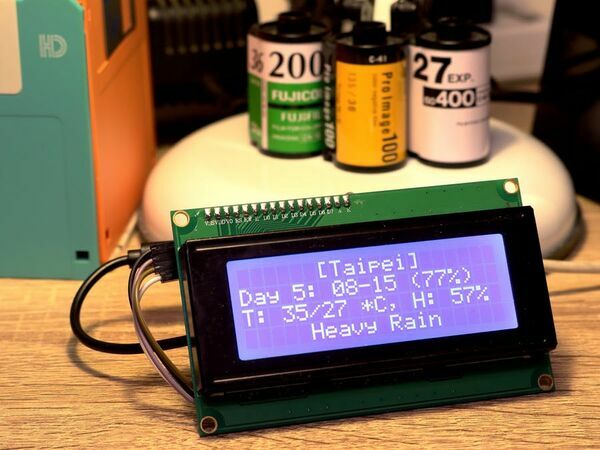
Web Weather Forecast Display on ESP8266 and MicroPython
"Using a D1 mini to download and show one-week weather forecast data on an LCD 20x4 display. Sometime ago I've come across MetaWeather, a weather data service requires no authentication or registration. I figured I'll make a little weather forecast display. (But is the weather service accurate though? Maybe just ok in my country. You can always check more accurate weather forecast on your phone, right?)" [...]
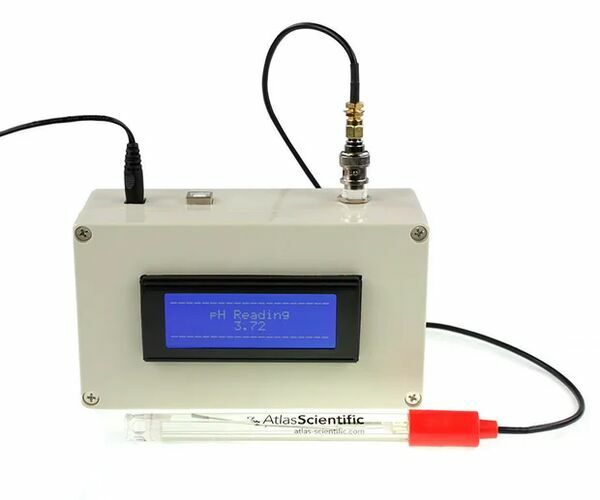
Arduino PH Meter
"In this project, we will be making a benchtop pH meter using the gravity analog pH circuit and probe from Atlas Scientific and an Arduino Uno. Readings will be displayed on a liquid crystal display (LCD). MATERIALS 1 - Arduino Uno 1 - Gravity analog pH sensor 1 - pH probe 1 - 20x4 LCD module 1 - 158x90x60mm Enclosure 1 - Mini breadboard Jumper wires 135 x 62 x 3.2mm acrylic sheet (plexiglass) 4 - 11mm standoffs and screws (comes with the pH sensor) 1 - 220Ω and 1 - 1kΩ resistors TOOLS Drill, drill bits, drywall cutter bits, files, screwdrivers, benchtop vise, band saw, glue gun and glue stick, soldering iron and solder, digital caliper, ruler. " [...]
2.75" 7-Segment LED Display Counter
"2.75" 7-Segment LED Display Counter 0-9 is a project based on cmos technology to operate correctly a 7-Segment LED Display of 6.8 V. The IC 4026 counter chosen is a practical counter operates without decoder, and with help of an IC 555 timer: the project can be completed. " [...]

Multi-Colored Glow Resin Engraving With a CNC
"I wanted to make an art piece for coffee table that glowed as I sipped my morning coffee or my evening tea. The issue in this is that I am an engineer, not an artist. Though, because I am an engineer, I am clever. I found some Princess Mononoke art inspired by Sergio Mancinelli (More Info below). I developed a primitive framework to turn simple art into semicomplex engravings that are reminiscent of stained glass. This was as much an experiment as it was a challenge and from my mistakes, of which there were several, you loyal reader may learn a few new tricks as you sit sipping your coffee in the glow of your own art piece as well." [...]
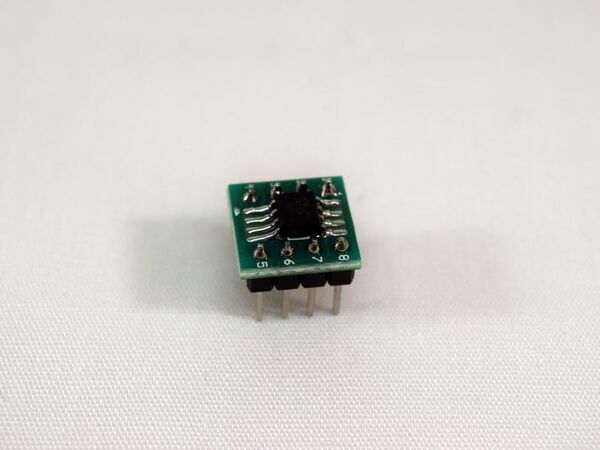
How to Use I2C EEPROM
"Expand your board's storage with an I2C-enabled EEPROM chip. What is EEPROM? EEPROM stands for Electronically Erasable Programmable Read-Only Memory. It allows for values to be written and stored for long periods of time while using very little power. Most microcontrollers even have EEPROM directly in their circuitry, such as the ATmega328P (Arduino Uno chip), which has 1KB of it. But what if that’s not enough?" [...]

Family Photo Frame From Soda Cans
"This Instructable shows you how to make photo frames from soda cans. Why do I need to use soda cans? ............ because soda cans are free to reuse and have a "metal look" on the inside that is truly amazing and hardly distinguishable from a product you can buy. Each frame can be made in your desired size. The frame is designed so that you can easily exchange the pictures. Since you are not limited by a budget you will be able to create a striking gallery wall in record time - the perfect way to add interest to your hallway, stairwell or living room." [...]
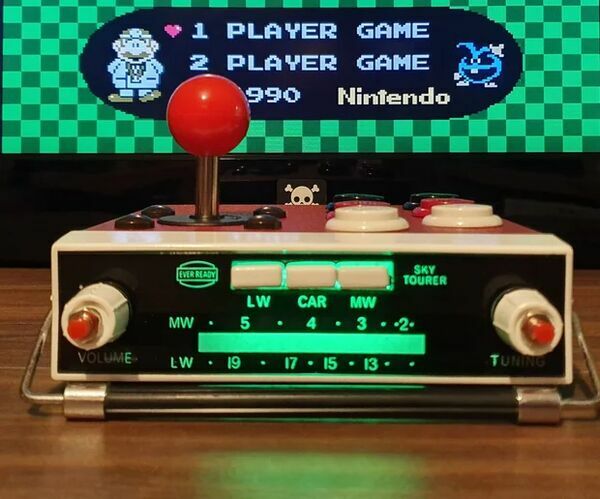
1963 Pi Tourer Game Console
"This is a 1963 Sky Tourer car radio that I've converted into a handy portable retro gaming console. It has a Raspberry Pi 3 built-in, with 6 arcade buttons and a joystick controlling those vintage RetroPie sprites via a Picade controller board. The radio's original volume and tuning knobs are the perfect home for the Start and Select buttons, keeping them handy but out of mashing range. Lighting things up is a Pimoroni Blinkt LED strip, which illuminates the radio's semi-transparent dial with different colours, depending on the game console being emulated. It's a self-contained game system, with a sturdy handle so you can carry it anywhere and play wherever there's an HDMI port! It even has an extra USB port round the back so that Player 2 can join in, or a keyboard can be connected." [...]
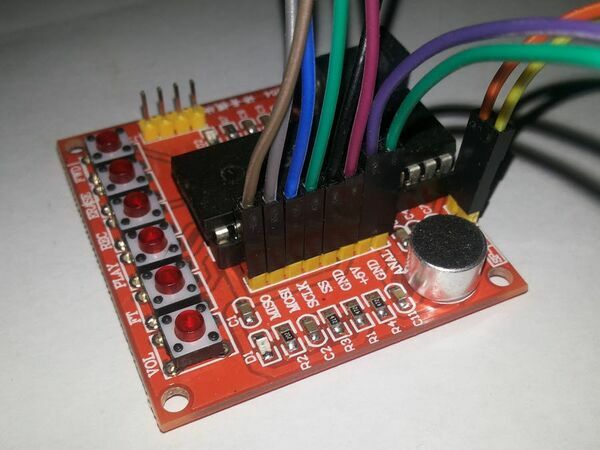
Software for Recording Audio Files Into ISD1700 Chips
"Make the simplest ISD1700 programmer using Arduino. In one of my recent projects I needed to add voicing the short text messages. Shields likeMP3-module with SD-card seemed to me excessive, and «teaching» Arduino to reproduce human speech would mean spending all the resources of microcontroller on this task only, which is an auxiliary one in fact. Also I would be running out of memory in any case. Brief search revealed voice recording and playback chips of ISD1700 series, SPI-controlled, capable to store messages up to several minutes long. Voice messages were prepared beforehand in form of separate files." [...]
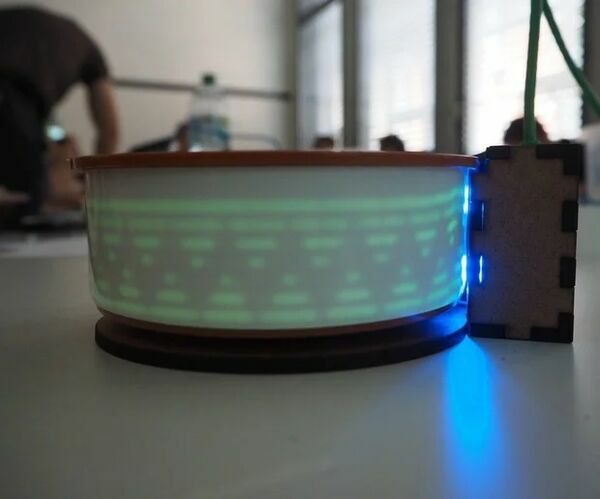
Persistance of Vision #phablabs
"Do you wonder how to write text with LEDs? In this workshop well show you how to do this and use UV LEDs to write a text or images on a phosphorescent surface. The photonics principles used are light absorption and light emission. The different wavelengths of light (visible and non-visible ones) are also introduced. " [...]
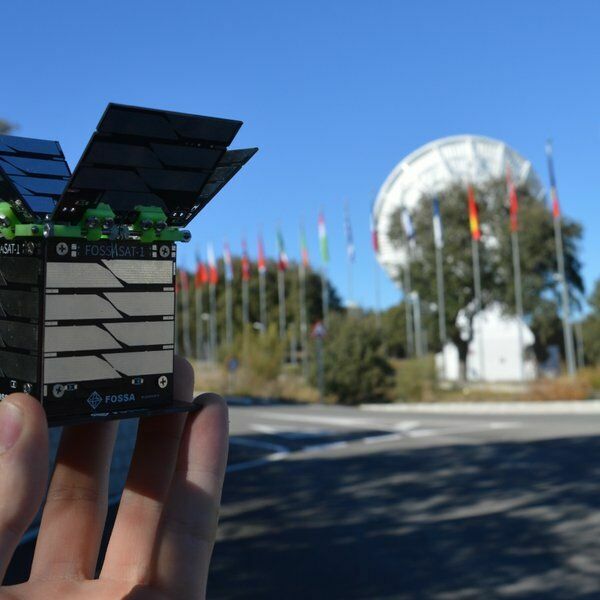
FossaSat-1, Open Source Satellite
"Creating a free & open source global IoT network, democratizing access to space by miniaturizing aerospace systems. Set to launch in Q3 of 2019, FossaSat-1 will be Spains first satellite launch by a non-government led organization or company. FossaSat-1 is the next advancement in picosatellite technology, sized at only 5x5x5cm and weighing only 250g, it will be one of the smallest satellites ever launched into space. This new pocketqube form factor allowed by the recent development in smartphone electronics will create a new satellite market never seen before, where satellites such as FossaSat-1 are being developed and launched into orbit for under EUR 30000, truly democratizing access to space for individuals, educational institutes and companies worldwide. FossaSat-1 will provide free and open source IoT communications for the globe using inexpensive LoRa modules, where anyone will be able to communicate with a satellite fusing modules found online for under 5 and basic wire mono-pole antennas. The satellite is being developed by Fossa Systems, a non-profit juvenile association based in Madrid." [...]
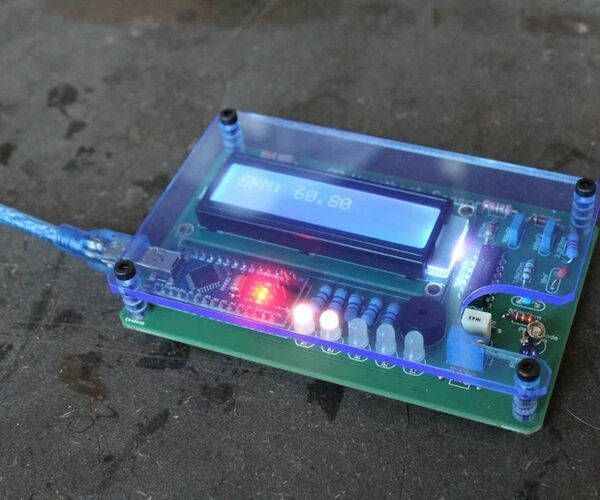
Heartbeat Sensor #phablabs
"Building a heartbeat detector with infrared. Taking your pulse is as simple as holding your finger to your neck and count the beats with your watch. But if you turn that mechanical pulsing action into an electric signal, you are able to record the data. The heartbeat detector uses the amount of infrared light reflected by the blood circulation inside your finger to generate that signal. " [...]
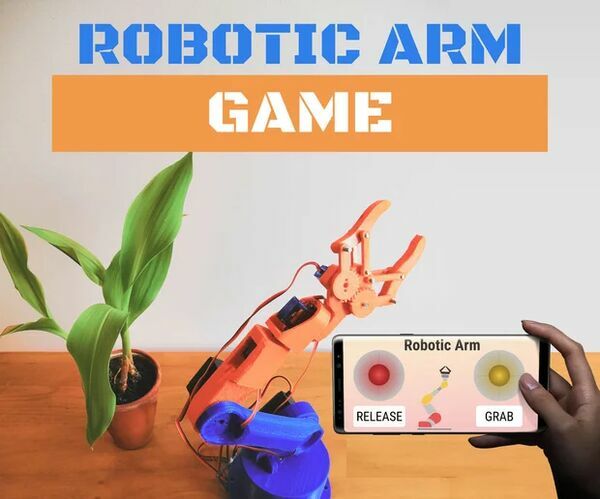
Robotic Arm Game - Smartphone Controller
"Here a fun summer game : The robotic Arm controlled by Smartphone !! As you can see on the Video, you can control the Arm with some Joysticks on your smartphone. You also can save a pattern, that the robot will reproduce in a loop, in order to do some repetitive tasks as exemple. But this pattern is modulable as you wish !!!! Be creative ! " [...]
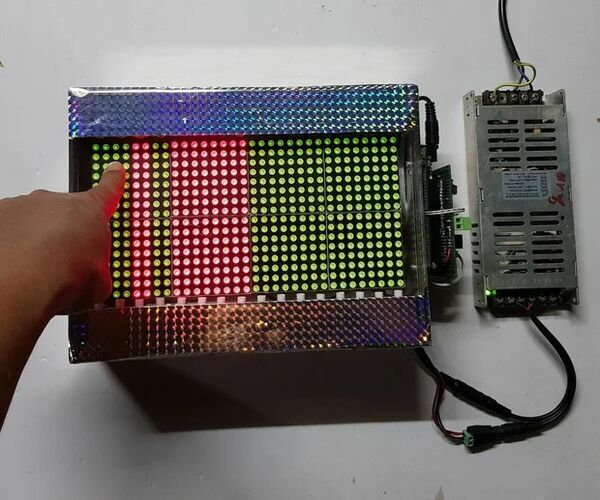
Led Matrix Touch Control
"This time Ill share how to integrate touch control into the bi-colors led matrix 16x32. It can be used to control indoor devices via led panel or carry out some interactive effects by touch action. It may sound strange but it's great because its operation is accurate and reliable. To do this, I have added infrared LEDs and the photo-transistors on top and bottom of 16x32 bi-colors led matrix module. " [...]
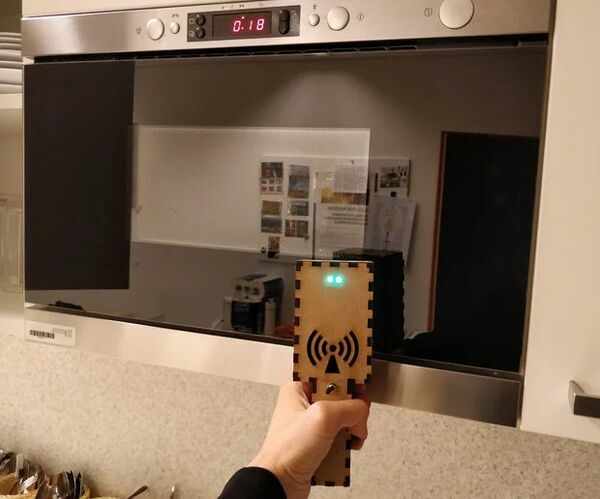
Electromagnetic Interference Detector #phablabs
"This is a DIY electronics skill-builder with a practical applicationfinding hidden smart phones and checking your microwave oven for leakages. Detecting microwaves from unknown sources. " [...]
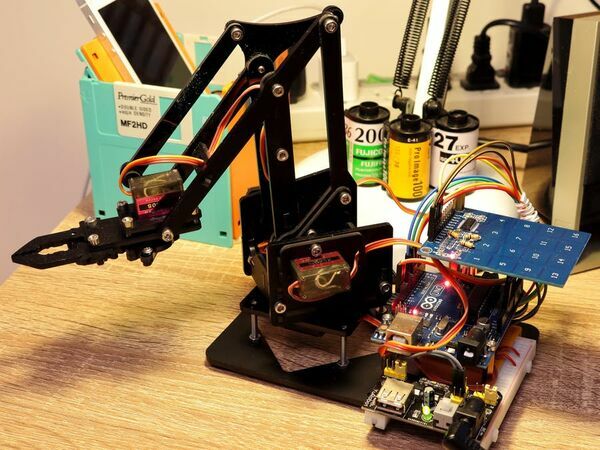
MeArm Controlled by Arduino Uno and TTP229-BSF Touchpad
"Instead of using 2-axis joysticks, I decided to use a spare TTP229-BSF capacitive touchpad to control a 4-DoF MeArm robotic arm. After returning the MeArm I borrowed from my former company, I wanted to build one for my own and make use of the spare touchpad. This project uses a dusty Arduino Uno Rev3, an old MB102 power supply module and the TTP229-BSF. There are already many MeArm wiring tutorials and assembling guides exist, so I won't go for these details. Just remember to calibrate your MeArm properly. " [...]
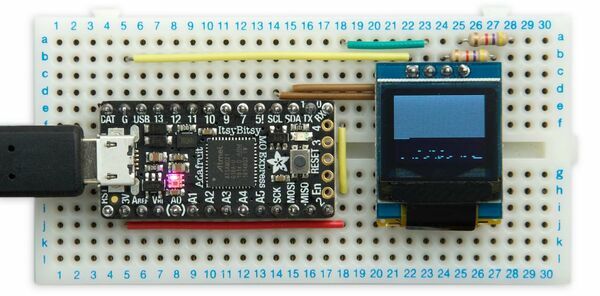
Visible Lisp Computer
"The Visible Lisp Computer is a Lisp interpreter that displays the contents of the Lisp workspace on an OLED display, so you can see program execution and garbage collection in real time. It's a special version of my uLisp interpreter for ARM boards [1], designed to run on an Adafruit ItsyBitsy M0, or an ATSAMD21E on a prototyping board, interfaced to an I2C OLED display. For example, when you evaluate a recursive function, such as the Fibonnaci function, you can see the memory being allocated to perform the calculation, and garbage collections clearing unused memory. Apart from being fun, it's educational, giving an insight into how a language with garbage collection works. Introduction The Visible Lisp Computer runs on an Adafruit ItsyBitsy M0, which is an ideal ATSAMD21 board for running uLisp. It's available from Adafruit [2], or Pimoroni in the UK [3]." [...]
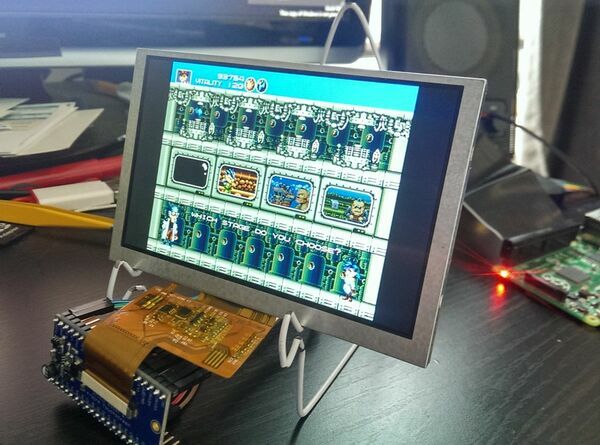
Let’s add a dirt cheap screen to the Raspberry Pi B+
"Recently the internet noticed the Raspberry Pi could drive LCD panels using DPI. This allows very inexpensive displays to be used with basically no additional hardware. In this post we dive into the hardware required, the software configuration, how to read screen datasheets, and basic troubleshooting. A quick word of warning, this is an advanced project. The rewards are significant but it’s difficult to get right. There are no specific prerequisite skills necessary, but a reasonable understanding of Linux and digital signals is extremely helpful." [...]
That's all Folks!



